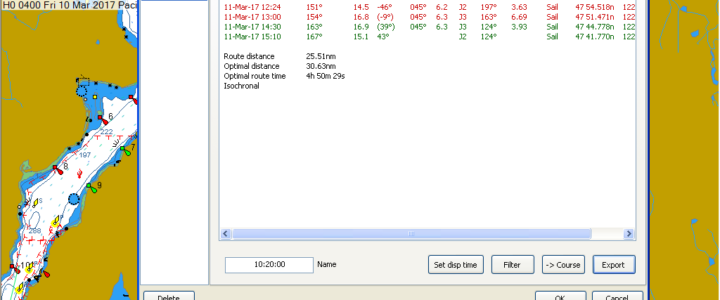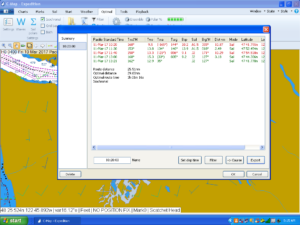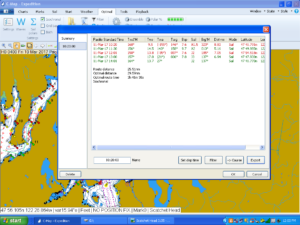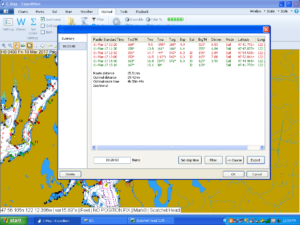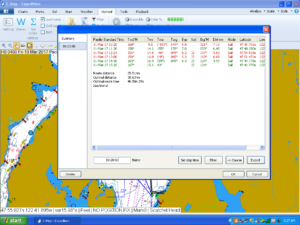
If only we were racing today…..but we are not, so we might as well deal with it. It’s just difficult to look out at the Sound and see 8-knots from the north with a temperature of 55⁰F and not dream about racing or cruising in those conditions. OK, the wind chill is still around 46⁰F so it’s not exactly summer-like yet. It does, however, give us some hope for July 5th…….
The surface chart for today, 21 April, shows us the inevitable for this upcoming weekend. We’ve got both rain and wind headed towards us for both days and well into next week. As we said last week, the long range weather has us as being wetter and cooler than normal and with the jet stream staying well south of us, it is going to stay that way. Don’t kill the messenger.
The surface chart for tomorrow, 22 April, shows a moderately healthy front aimed right at us. The timing of frontal passage is still very unclear. The coastal buffer zone (CBZ) will once again have an impact on timing however it won’t be as dramatic as last weekend where it totally blocked the front and sent it off to the northwest and away from here. The key will be for you to check barometric pressure trends along the coast and inland reporting stations. It’s already starting to drop today so it will happen. After that, check the wind directions and wind velocities around the Sound, including the Washington State ferries on the Bainbridge and Edmonds-Kingston runs. The pre-frontal breeze will be southeasterly, while if the pressure is rising and the wind is out of the southwest, that would be post-frontal. It could, however, be a mixed bag as the front interacts with the CBZ. As per usual, expect stronger breeze along the coast and in the eastern Straits and the San Juan Islands.
That doesn’t necessarily mean light air in the race area off of Shilshole. It could mean 15-20 knots from the SSW in the morning backing off around midday to 5-15-knots from the south and then filling back in from the SW at 15-20-knots around mid-afternoon before slowly backing off towards sunset.
Sunday looks lighter however as the front has passed expect a more consistent onshore flow to develop over the course of the day which could have the breeze build slowly into the 15-20-knot range from the SW over the central and south Sound. The convergence zone will start in the north Sound around Port Townsend as strong westerly fills from Race Rocks to the East. The CZ will slowly work its way south to Edmonds and north Seattle by the early evening on Sunday.
Tidal Current at West Point
Saturday
0754 Slack
1124 Max Flood .82
1418 Slack
1600 Max Ebb .3
1936 Slack
 Sunday
Sunday
0842 Slack
1212 Max Flood .96
1506 Slack
1648 Max Ebb .38
2106 Slack
I have also included the graph of current velocity over time as it shows a distinctly non-sinusoidal curve so be aware especially with the flood being stronger than the ebb in a predominately southerly breeze situation. A little unusual so watch the COG and SOG.
Have a great weekend but be prepared for just about anything!
Bruce has raced and cruised the Pacific Northwest his entire life. He earned a Bachelor’s of Science from the University of Washington in Biological Oceanography and learned meteorology “to keep from getting kicked around on the race course.” Bruce spent nearly two decades as Associate Publisher for Northwest Yachting Magazine, retiring in mid-2015, and was the chairman of the board of trustees for the Northwest Marine Trade Association in 2014. (photo of Bruce driving Playstation is a bit dated, but cool)





































































